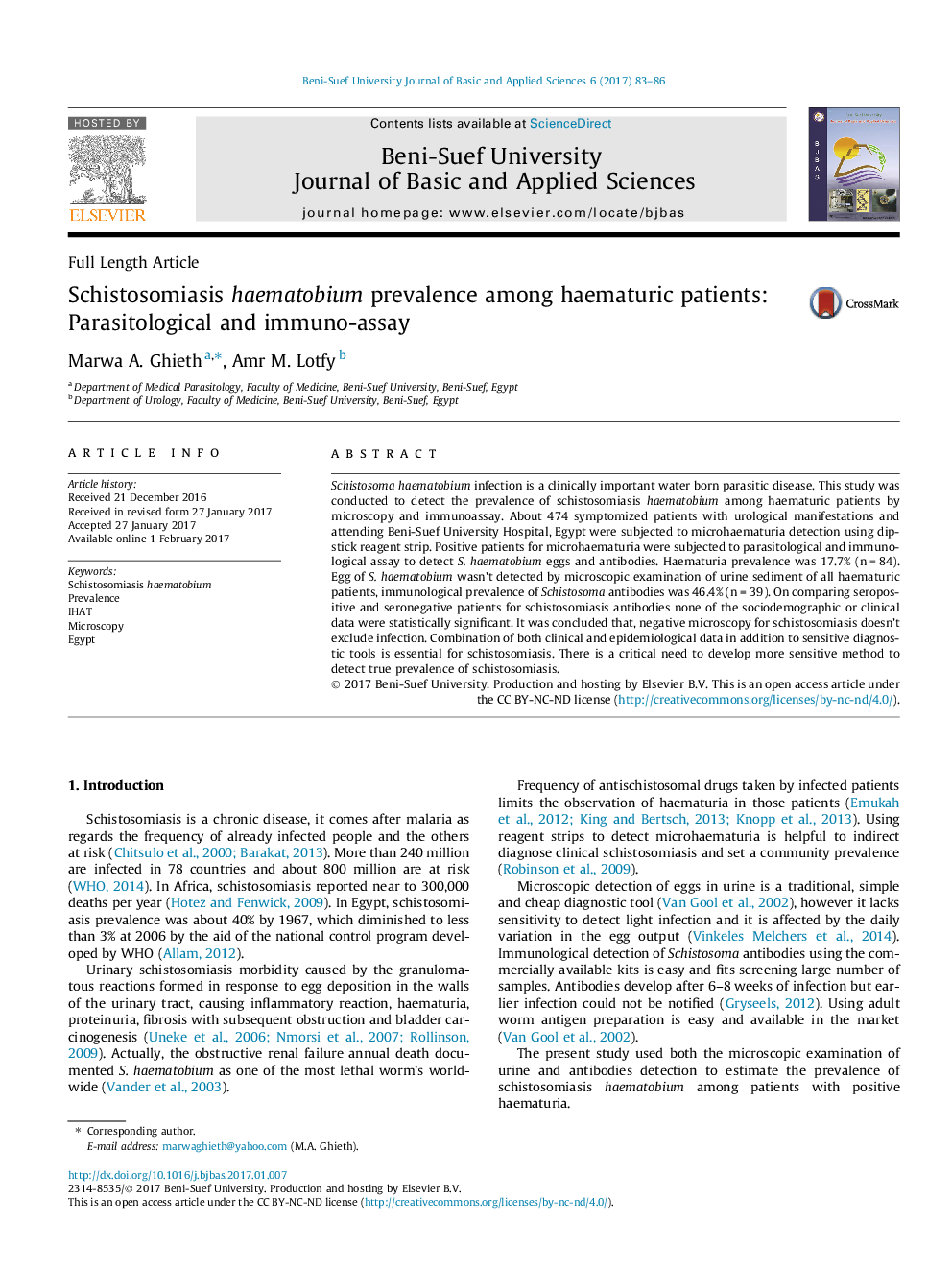| Article ID | Journal | Published Year | Pages | File Type |
|---|---|---|---|---|
| 7211525 | Beni-Suef University Journal of Basic and Applied Sciences | 2017 | 4 Pages |
Abstract
Schistosoma haematobium infection is a clinically important water born parasitic disease. This study was conducted to detect the prevalence of schistosomiasis haematobium among haematuric patients by microscopy and immunoassay. About 474 symptomized patients with urological manifestations and attending Beni-Suef University Hospital, Egypt were subjected to microhaematuria detection using dipstick reagent strip. Positive patients for microhaematuria were subjected to parasitological and immunological assay to detect S. haematobium eggs and antibodies. Haematuria prevalence was 17.7% (n = 84). Egg of S. haematobium wasn't detected by microscopic examination of urine sediment of all haematuric patients, immunological prevalence of Schistosoma antibodies was 46.4% (n = 39). On comparing seropositive and seronegative patients for schistosomiasis antibodies none of the sociodemographic or clinical data were statistically significant. It was concluded that, negative microscopy for schistosomiasis doesn't exclude infection. Combination of both clinical and epidemiological data in addition to sensitive diagnostic tools is essential for schistosomiasis. There is a critical need to develop more sensitive method to detect true prevalence of schistosomiasis.
Keywords
Related Topics
Physical Sciences and Engineering
Engineering
Engineering (General)
Authors
Marwa A. Ghieth, Amr M. Lotfy,
